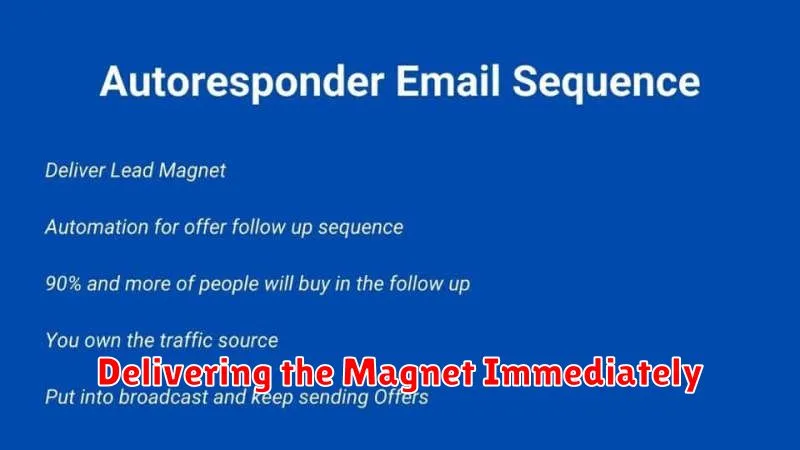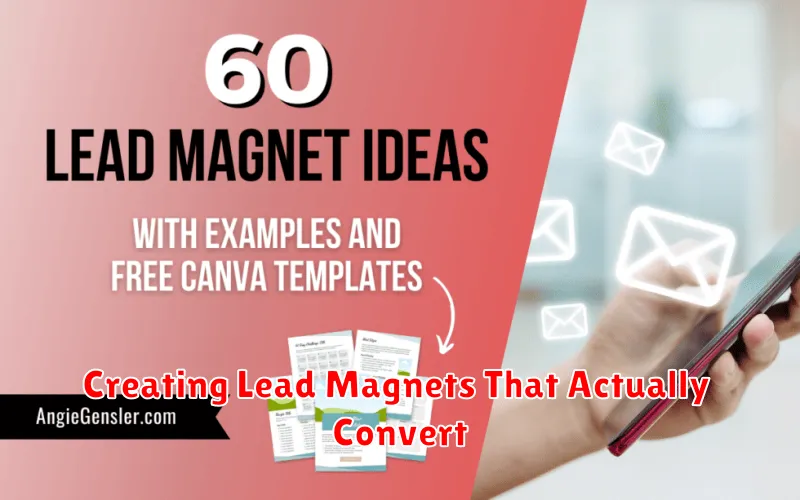Generating high-quality leads is the lifeblood of any successful business. A lead magnet acts as a powerful tool to attract potential customers and nurture them through the sales funnel. However, simply creating a lead magnet isn’t enough. It needs to be strategically designed to convert those leads into paying customers. This article will delve into the essential elements of crafting lead magnets that actually convert, transforming casual visitors into engaged prospects and ultimately, loyal clients. We’ll explore proven strategies for developing irresistible offers that capture your target audience’s attention and compel them to take action.
Many businesses struggle to create lead magnets that convert, often offering generic content that fails to resonate with their audience. This results in low conversion rates and wasted resources. By focusing on providing genuine value and tailoring your lead magnets to address specific pain points, you can significantly increase your chances of conversion. Learn how to develop high-converting lead magnets that not only attract leads but also effectively nurture them towards becoming paying customers. This article provides actionable insights and practical tips to help you optimize your lead generation efforts and maximize your return on investment.
Understanding Your Audience’s Pain Points
Creating a truly effective lead magnet hinges on understanding your audience’s pain points. A lead magnet isn’t just a freebie; it’s a solution to a problem your target audience faces. By addressing these pain points directly, you position your lead magnet as a valuable resource, increasing its perceived worth and boosting conversion rates.
To identify these pain points, thorough research is crucial. Analyze online forums, social media groups, and customer reviews to understand the challenges your audience discusses. Consider conducting surveys or interviews to gain deeper insights into their specific needs and frustrations.
Once you’ve identified the key pain points, prioritize them based on their prevalence and impact. Focus your lead magnet on addressing the most pressing and widespread issues your audience experiences. This targeted approach will ensure your lead magnet resonates with a larger portion of your target market.
Choosing the Right Type of Lead Magnet

Selecting the right lead magnet is crucial for attracting your target audience and maximizing conversions. Consider your ideal customer’s needs and pain points. What valuable information can you offer them in exchange for their contact information?
Different types of lead magnets cater to various preferences and stages of the buyer’s journey. Some popular and effective options include:
- Checklists and Cheat Sheets: Concise and actionable resources providing step-by-step guidance.
- Ebooks and Guides: In-depth content exploring a specific topic relevant to your audience.
- Templates and Worksheets: Provide a framework for users to complete a task or solve a problem.
- Webinars and Online Courses: Offer valuable educational content in a live or recorded format.
- Quizzes and Assessments: Interactive tools that engage users and provide personalized insights.
By carefully considering your audience and the value you’re providing, you can choose a lead magnet format that resonates and drives conversions.
Designing a High-Value Resource

A high-value resource is the cornerstone of a successful lead magnet. It must genuinely benefit your target audience by addressing a specific pain point or providing actionable insights. The perceived value should be high enough that individuals willingly exchange their contact information to receive it.
Consider the format of your resource. Ebooks, checklists, templates, and webinars are popular choices. Select the format that best suits the content and your audience’s preferences. A checklist, for example, is ideal for providing a quick, actionable guide, while an ebook allows for deeper dives into complex topics.
Quality content is crucial. Ensure your resource is well-researched, clearly written, and free of errors. It should provide unique value that sets it apart from readily available free information. Focus on providing practical advice and solutions that your audience can implement immediately.
Using Compelling CTAs and Landing Pages
Once you’ve crafted a high-value lead magnet, you need to ensure it’s easily accessible and enticing to your target audience. This is where compelling calls-to-action (CTAs) and dedicated landing pages come into play.
Your CTAs should be clear, concise, and action-oriented. Use strong verbs and highlight the benefit of downloading your lead magnet. For example, instead of “Download Now,” try “Get Your Free Guide to Effective Marketing Strategies Today!”
Landing pages should be specifically designed to convert visitors into leads. Eliminate distractions and focus solely on the lead magnet. Clearly communicate the value proposition and benefits of your offer. A simple, uncluttered design with a prominent CTA button is key.
Testing different CTAs and landing page variations is crucial for optimizing conversion rates. Experiment with different wording, colors, and layouts to see what resonates best with your audience.
Delivering the Magnet Immediately

After a visitor opts in, prompt delivery of your lead magnet is crucial. A delayed delivery can lead to frustration and a decrease in engagement. The user expects immediate access to the promised resource.
The most common and effective method is automated email delivery. Upon submission, the user should receive an email containing the lead magnet or a link to download it. This automated process ensures a seamless and timely transfer.
Alternative delivery methods include redirecting users to a thank you page with the download link or providing direct access on the submission confirmation page. Choosing the right delivery method depends on the nature of your lead magnet and overall user experience.
Testing your delivery system is paramount. Ensure the process functions flawlessly and users receive the correct lead magnet without any hurdles.
Following Up With a Nurture Sequence
After a lead downloads your lead magnet, a well-structured nurture sequence is crucial for turning that initial interest into a conversion. This sequence should build upon the value provided in the lead magnet itself.
Consistency is key. Deliver valuable content at regular intervals. This could be daily, weekly, or bi-weekly, depending on your audience and industry.
Segmentation plays a vital role. Tailor your nurture sequence based on the lead magnet downloaded, as this indicates their specific interests. This allows you to provide more targeted and relevant content.
Each email in your sequence should provide value and move the lead closer to a desired action, whether that’s requesting a demo, signing up for a trial, or making a purchase.
Measuring Success and Optimizing
Creating a high-converting lead magnet isn’t a one-and-done process. Continuous monitoring and optimization are key to maximizing its effectiveness. This involves tracking key metrics to understand what’s working and what’s not.
Key Performance Indicators (KPIs) to watch include:
- Conversion Rate: This is the percentage of visitors who download your lead magnet. A higher conversion rate indicates a more effective magnet and landing page.
- Lead Quality: Assess the quality of leads generated. Are they truly your target audience? Do they engage with your follow-up content?
- Cost Per Lead (CPL): If you’re running paid campaigns to promote your lead magnet, calculate the cost of acquiring each lead.
Once you have data, you can begin optimizing. A/B testing different headlines, calls to action, or even the lead magnet itself can reveal valuable insights. Don’t be afraid to experiment and iterate based on your findings.

